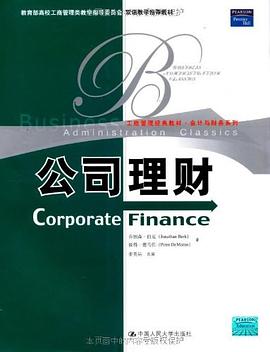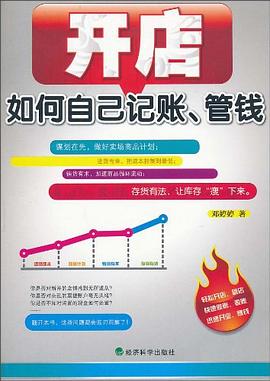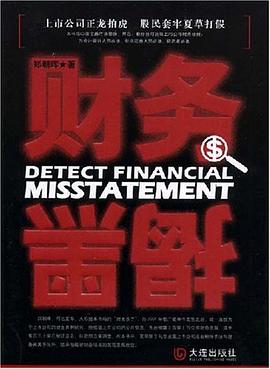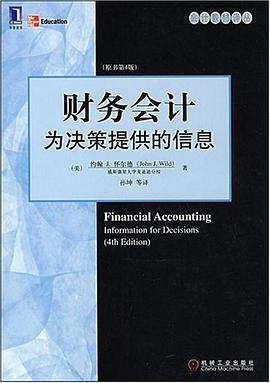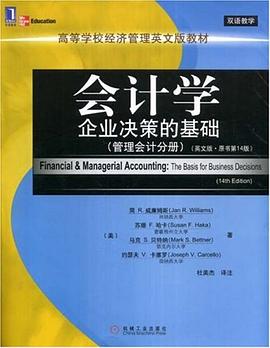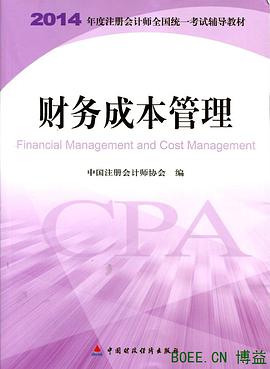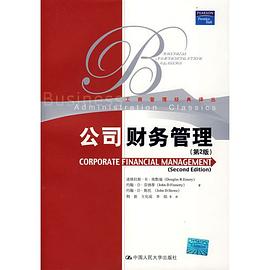PART Ⅰ INTRODUCTION 1
Chapter 1 The Corporation 2
1.1 The Four Types of Firms 3
1.2 Ownership Versus Control of Corporations 8
1.3 The Stock Market 11
Chapter 2 Arbitrage and Financial Decision Making 15
2.1 Valuing Costs and Benefits 16
2.2 Interest Rates and the Time Value of Money 19
2.3 Present Value and the NPV Decision Rule 22
2.4 Arbitrage and the Law of One Price 27
2.5 No-Arbitrage and Security Prices 29
2.6 The Price of Risk 35
2.7 Arbitrage with Transactions Costs 41
PART Ⅱ TOOLS 43
Chapter 3 The Time Value of Money 44
3.1 The Timeline 45
3.2 The Three Rules of Time Travel 46
3.3 The Power of Compounding:An Application 51
3.4 Valuing a Stream of Cash Flows 52
3.5 The Net Present Value of a Stream of Cash Flows 55
3.6 Perpetuities, Annuities,and Other Special Cases 56
3.7 Solving Problems with a Spreadsheet Program 67
3.8 Solving for Variables Other Than Present Value or Future Value 69
Chapter 4 Interest Rates 79
4.1 Interest Rate Quotes and Adjustments 80
4.2 The Determinants of Interest' Rates 85
4.3 Risk and Taxes 92
4.4 The Opportunity Cost of Capital 94
Chapter 5 Investment Decision Rules 98
5.1 NPV and Stand-Alone Projects 99
5.2 Alternative Decision Rules 100
5.3 Mutually Exclusive Investment Opportunities 110
5.4 Project Selection with Resource Constraints 115
PART Ⅲ BASIC VALUATION 119
Chapter 6 Fundamentals of Capital Budgeting 120
6.1 Forecasting Earnings 121
6.2 Determining Free Cash Flow and NPV 129
6.3 Analyzing the ProJect 139
Chapter 7 Valuing Bonds 143
7.1 Bond Cash Flows,Prices, and Yields 144
7.2 Dynamic Behavior of Bond Prices 149
7.3 The Yield Curve and Bond Arbitrage 156
7.4 Corporate Bonds 160
Chapter 8 Valuing Stocks 169
8.1 Stock Prices, Returns,and the Investment Horizon 170
8.2 The Dividend-Discount Model 173
8.3 Total Payout and Free Cash Flow Valuation Models 180
8.4 Valuation Based on Comparable Firms 185
8.5 Information, Competition,and Stock Prices 190
PART Ⅳ RISKAND RETURN 197
Chapter 9 Capital Markets and the Pricing of Risk 198
9.1 A First Look at Risk and Return 199
9.2 Common Measures of Risk and Return 201
9.3 Historical Returns of Stocks and Bonds 204
9.4 The Historical Tradeoff Between Risk and Return 212
9.5 Common Versus Independent Risk 214
9.6 Diversification in Stock Portfolios 218
9.7 Estimating the Expected Return 222
9.8 Risk and the Cost of Capital 226
9.9 Capital Market Efficiency 228
PART Ⅴ CAPITAL STRUCTURE 231
Chapter 10 Capital Structure in a Perfect Market 232
10.1 Equity Versus Debt Financing 233
10.2 Modigliani-Miller I: Leverage,Arbitrage, and Firm Value 237
10.3 Modigliani-Millerli: Leverage,Risk, and the Cost of Capital 242
10.4 Capital Structure Fallacies 250
10.5 MM: Beyond the Propositions 254
Chapter 11 Debt and Taxes 256
11.1 The Interest Tax Deduction 257
11.2 Valuing the Interest Tax Shield 259
11.3 Recapitalizing to Capture the Tax Shield 265
11.4 Optimal Capital Structure with Taxes 268
Chapter 12 Payout Policy 277
12.1 Distributions to Shareholders 278
12.2 Comparison of Dividends and Share Repurchases .. 281
12.3 The Tax Disadvantage of Dividends 287
12.4 Dividend Capture and Tax Clienteles 291
12.5 Payout Versus Retention of Cash 295
12.6 Signaling with Payout Policy 301
12.7 Stock Dividends, Splits,and Spin-offs 306
PART Ⅵ VALUATION 311
Chapter 13 Capital Budgeting and Valuation with Leverage 312
13.1 Overview 313
13.2 The Weighted Average Cost of Capital Method 314
13.3 The Adjusted Present Value Method 318
13.4 The Flow-to-Equity Method 322
13.5 Project-Based Costs of Capital 326
13.6 APV with Other Leverage Policies 330
13.7 Other Effects of Financing 334
Chapter 14 Valuation and Financial Modeling: A Case Study 342
14.1 Valuation Using Comparables 343
14.2 The Business Plan 345
14.3 Building the Financial Model 348
14.4 Estimating the Cost of Capital 355
14.5 Valuing the Investment 358
14.6 Sensitivity Analysis 366
PART Ⅶ OPTIONS 369
Chapter 15 Financial Options 370
15.1 Option Basics 371
15.2 Option Payoffs at Expiration 374
15.3 Put-Call Parity 383
15.4 Factors Affecting Option Prices 384
15.5 Exercising Options Early 386
15.6 Options and Corporate Finance 391
Chapter 16 Option Valuation 395
16.1 The Binomial Option Pricing Model 396
16.2 The Black-Scholes Option Pricing Model 404
16.3 Risk-Neutral Probabilities 414
16.4 Risk and Return of an Option 417
16.5 Beta of Risky Debt 420
PART Ⅷ LONG-TERM FINANCING 423
Chapter 17 The Mechanics of Raising Equity Capital 424
17.1 Equity Financing for Private Companies 425
17.2 The Initial Public Offering 430
17.3 The Seasoned Equity Offering 443
Chapter 18 Debt Financing 448
18.1 Corporate Debt 449
18.2 Other Types of Debt 455
18.3 Bond Covenants 458
18.4 Repayment Provisions 458
Chapter 19 Leasing 466
19.1 The Basics of Leasing 467
19.2 Accounting, Tax, and Legal Consequences of Leasing 473
19.3 The Leasing Decision 478
19.4 Reasons for Leasing 484
PART IX SHORT-TERM FINANCING 489
Chapter 20 Working Capital Management 490
20.1 Overview of Working Capital 491
20.2 Trade Credit 493
20.3 Receivables Management 496
20.4 Payables Management 499
20.5 Inventory Management 501
20.6 Cash Management 502
Chapter 21 Short-Term Financial Planning 506
21.1 Forecasting Short-Term Financing Needs 507
21.2 The Matching Principle 512
21.3 Short-Term Financing with Bank Loans 514
21.4 Short-Term Financing with Commercial Paper 517
21.5 Short-Term Financing with Secured Financing 518
· · · · · · (
收起)
